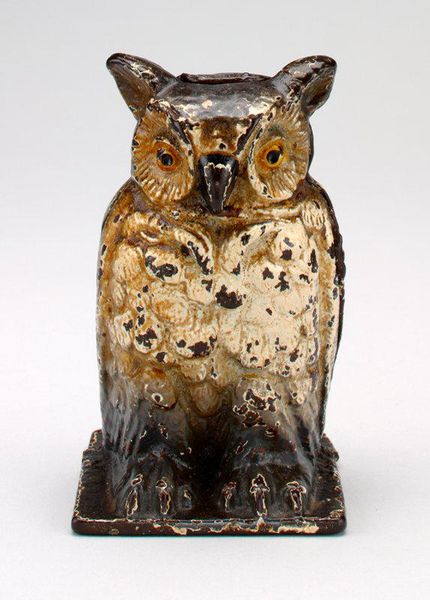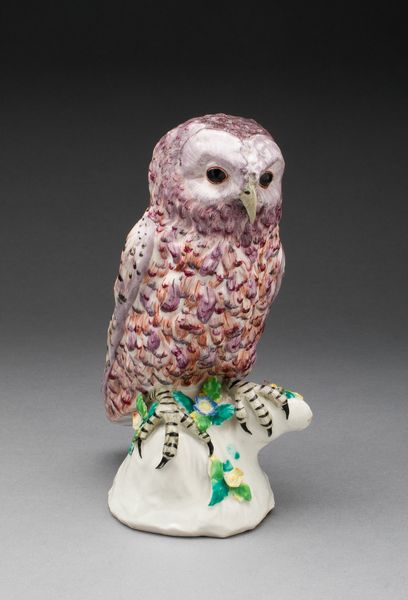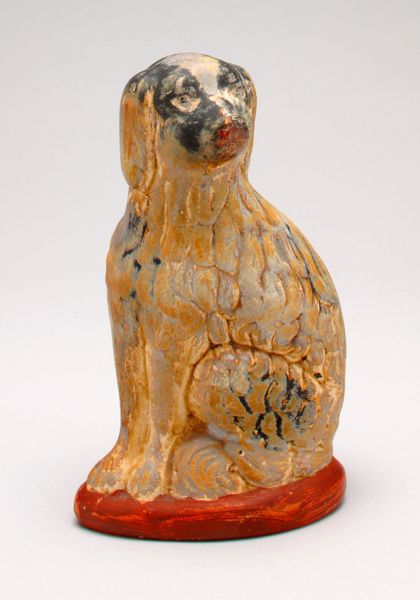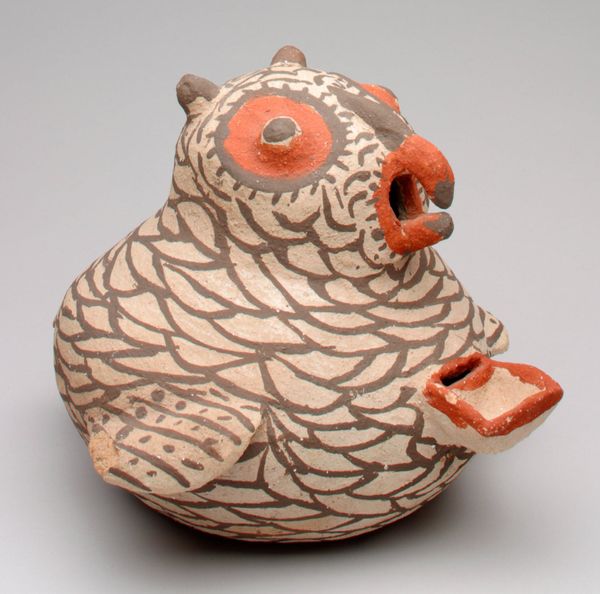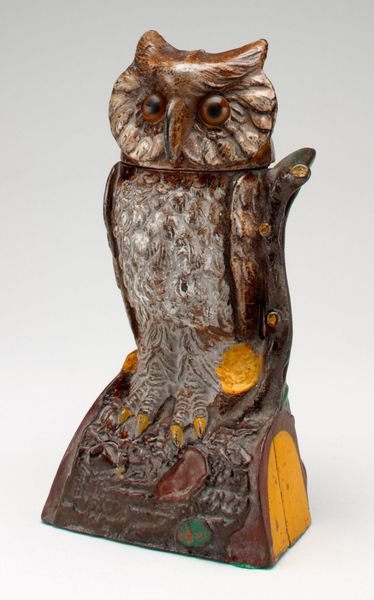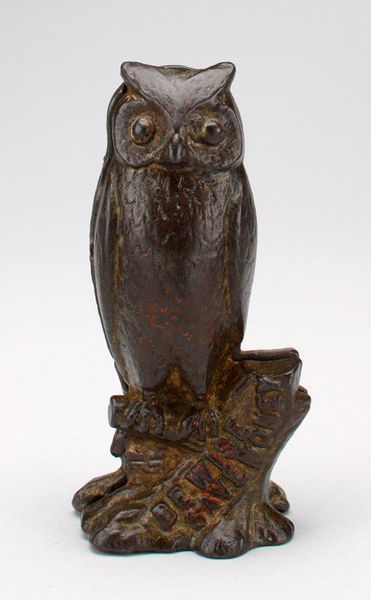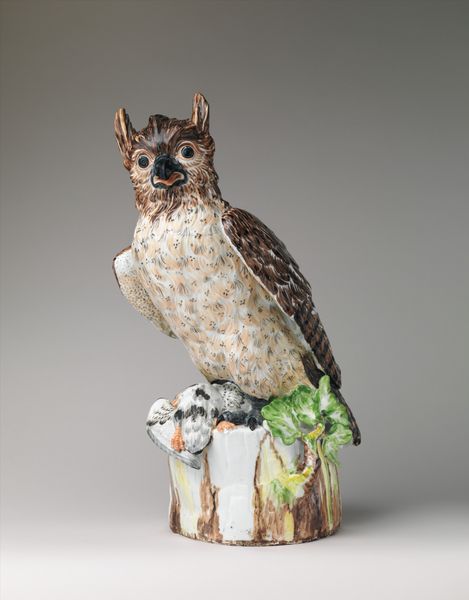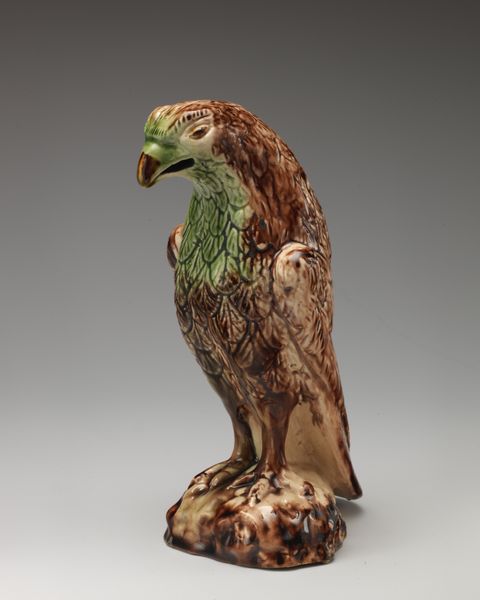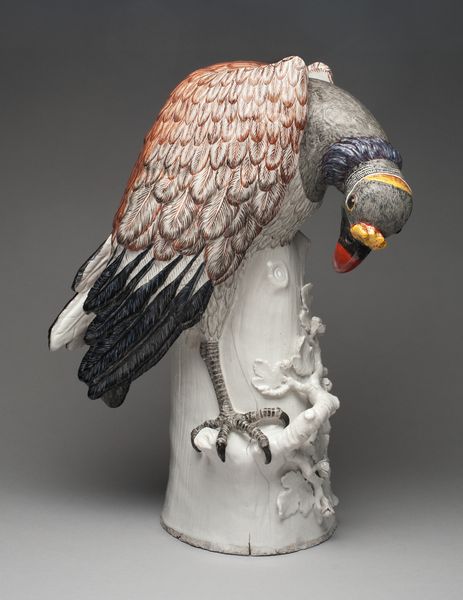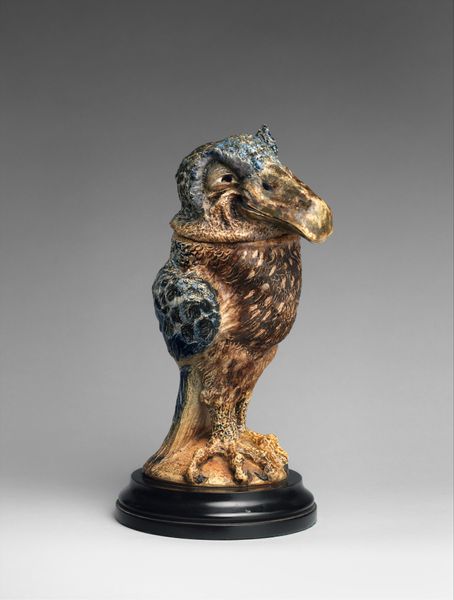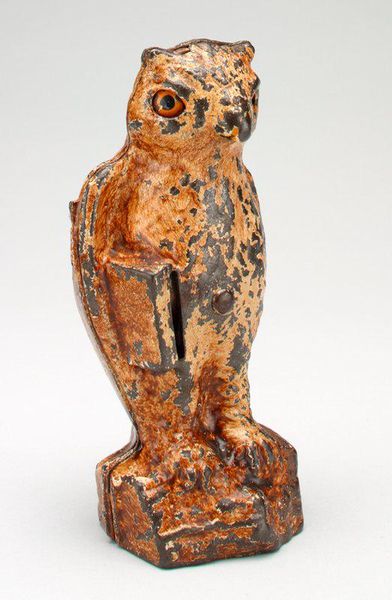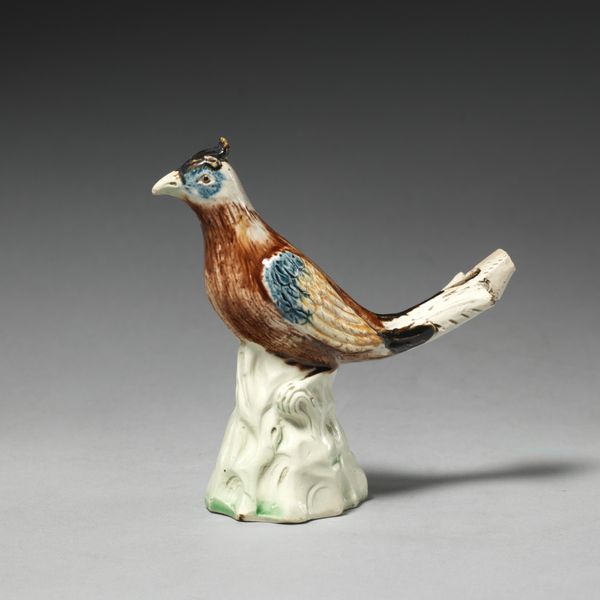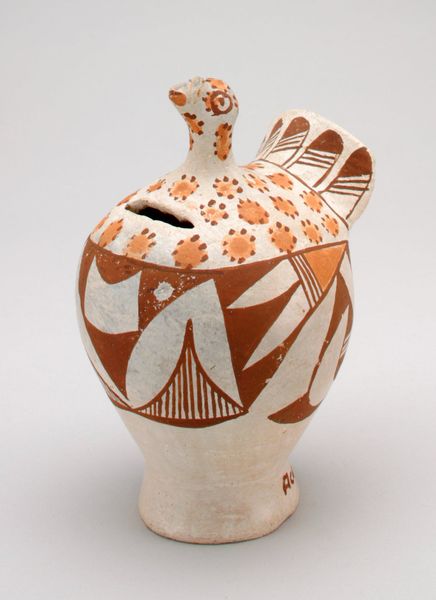
ceramic, sculpture
#
ceramic
#
figuration
#
folk-art
#
sculpture
Dimensions: 3 1/4 x 2 3/16 x 2 in. (8.26 x 5.56 x 5.08 cm)
Copyright: Public Domain
This still bank, in the shape of an owl, was made by an anonymous artist. Still banks have a fascinating history tied to social and economic developments. They became popular in the 19th century, reflecting a growing emphasis on thrift and financial literacy, particularly among the working classes. The owl motif here is interesting, as the symbolism of the owl is knowledge and wisdom. But it may have been chosen because it looked like a good shape for a still bank to appeal to children. The rise of industrial production allowed for mass production of these objects, making saving more accessible. These banks weren't just for saving money. They were tools for instilling values and normalizing financial habits. We might ask, were these banks an exercise of social power? Did they encourage a focus on the individual rather than more social forms of care? These are the kinds of questions a historian can explore by looking at the material culture of the past.
Comments
No comments
Be the first to comment and join the conversation on the ultimate creative platform.
